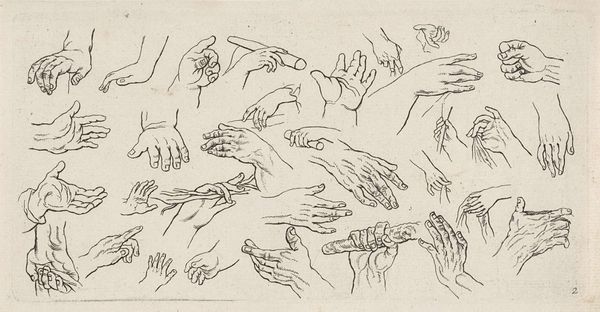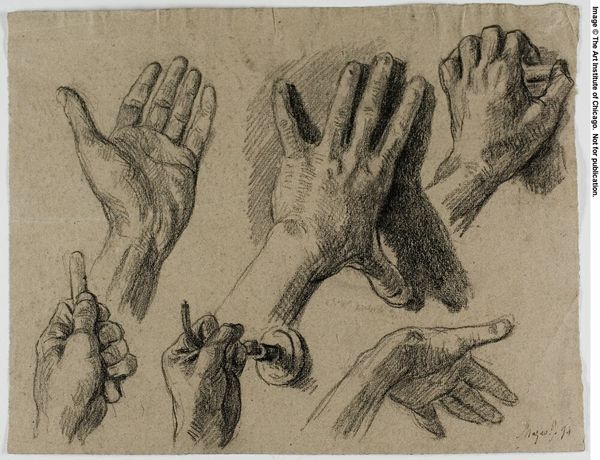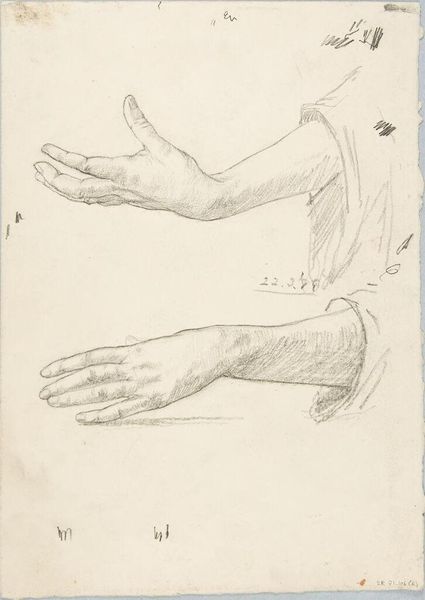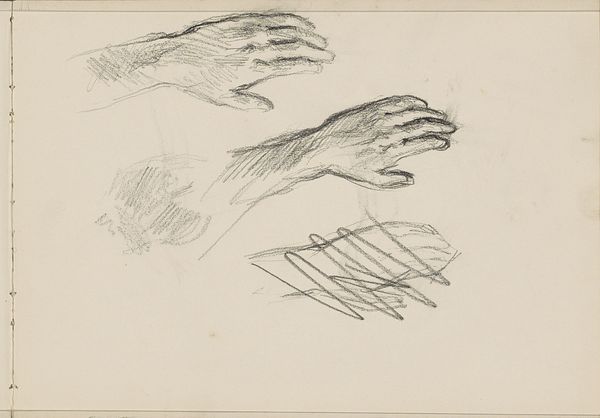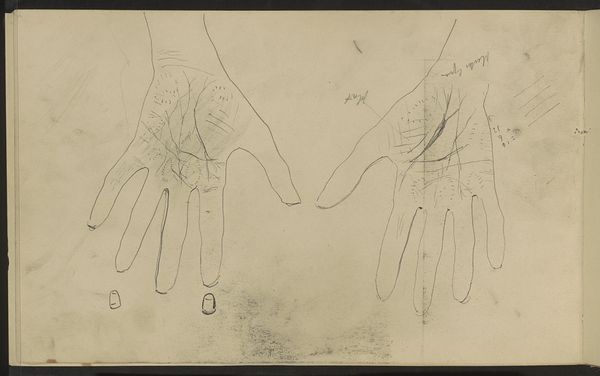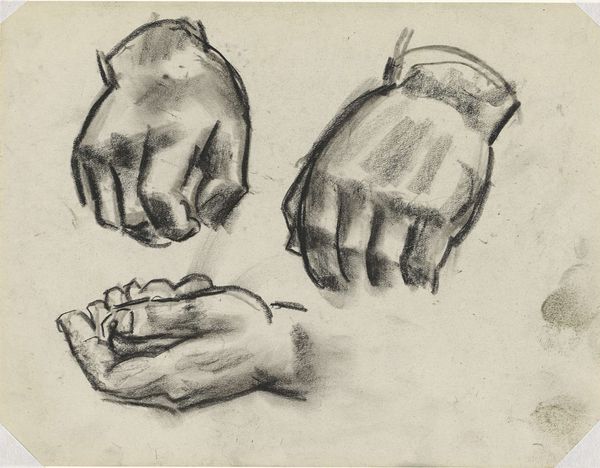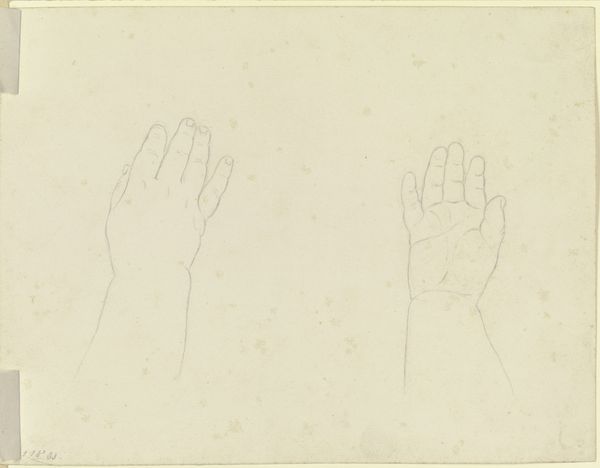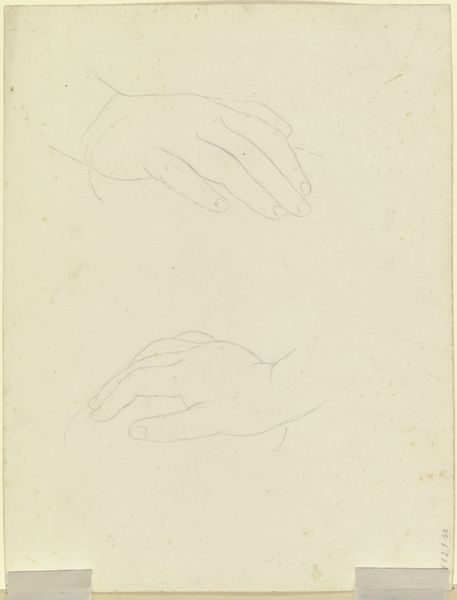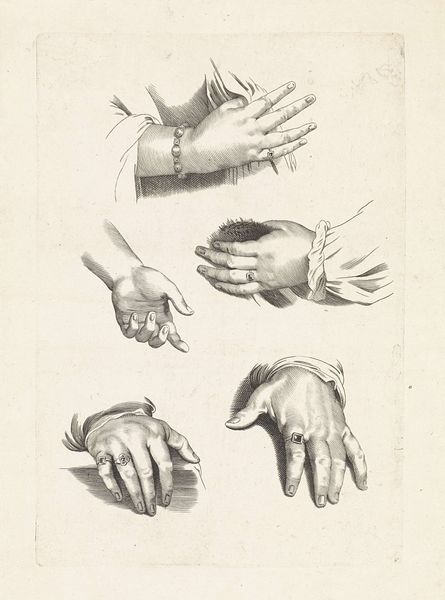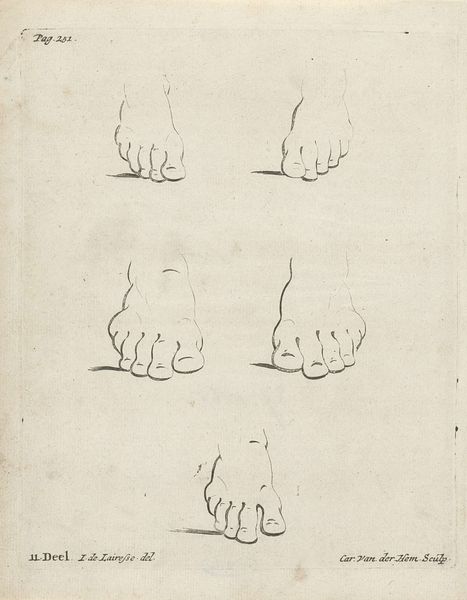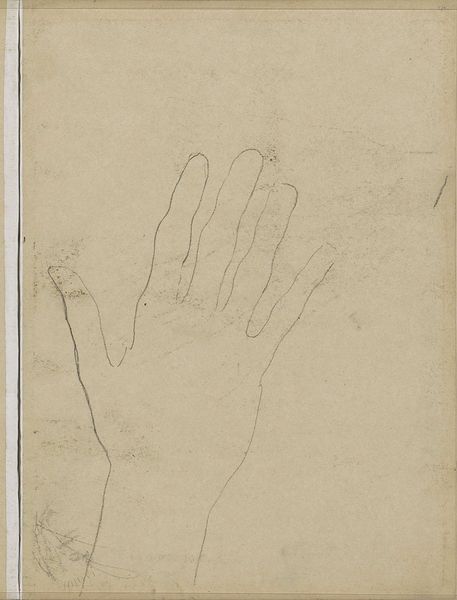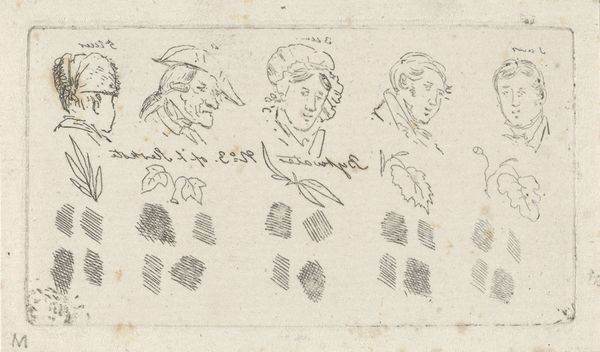
drawing, paper, ink, pencil
#
portrait
#
drawing
#
16_19th-century
#
paper
#
ink
#
sketchwork
#
ink drawing experimentation
#
pen-ink sketch
#
pencil
#
sketchbook drawing
#
academic-art
Dimensions: height 30 mm, width 79 mm
Copyright: Rijks Museum: Open Domain
Curator: Our next piece is entitled "Studieblad met handen en arceringen," or "Study Sheet with Hands and Hatching," a drawing in ink, pencil, and pen by Anthonie Willem Hendrik Nolthenius de Man. The work dates between 1803 and 1842. Editor: Well, it strikes me as an exercise in form more than anything else. Look at the careful gradations of light achieved solely through line—it’s almost architectural in its precision. Curator: The hands themselves are fascinating. Consider how often hands appear as symbols of labor, creation, or even supplication across various cultures and religions. Here, devoid of context, they almost become abstract shapes, losing their immediate communicative power. Editor: Precisely! The lack of a narrative anchors our focus entirely on technique. See how each hand subtly shifts, offering a slightly different angle, a new play of light and shadow? The artist is systematically exploring the possibilities of the medium. Curator: I am also intrigued by the additional small vine-like sketches between each hand-hatching pairings. This feels like a symbolic connection of hands and their action to an ability to grow, nurture, harvest. This connects these drawings to the world of human potential and creativity, but within an organic frame. Editor: Perhaps, but it's just as valid to consider that the small additions of botanic forms were also an exploration into creating subtle differences in texture and tone. It gives another exercise in the sketchbook work by De Man here. Curator: That’s fair. Both are likely correct. Editor: Indeed. This little sketch offers a glimpse into the artistic process—a private exploration of form and skill. It invites us to slow down and observe the fundamental elements of representation. Curator: And in so doing, perhaps to reflect on what we bring to those elements, too, to consider the layers of meaning—or the deliberate lack thereof—that we project onto even the simplest image.
Comments
No comments
Be the first to comment and join the conversation on the ultimate creative platform.
